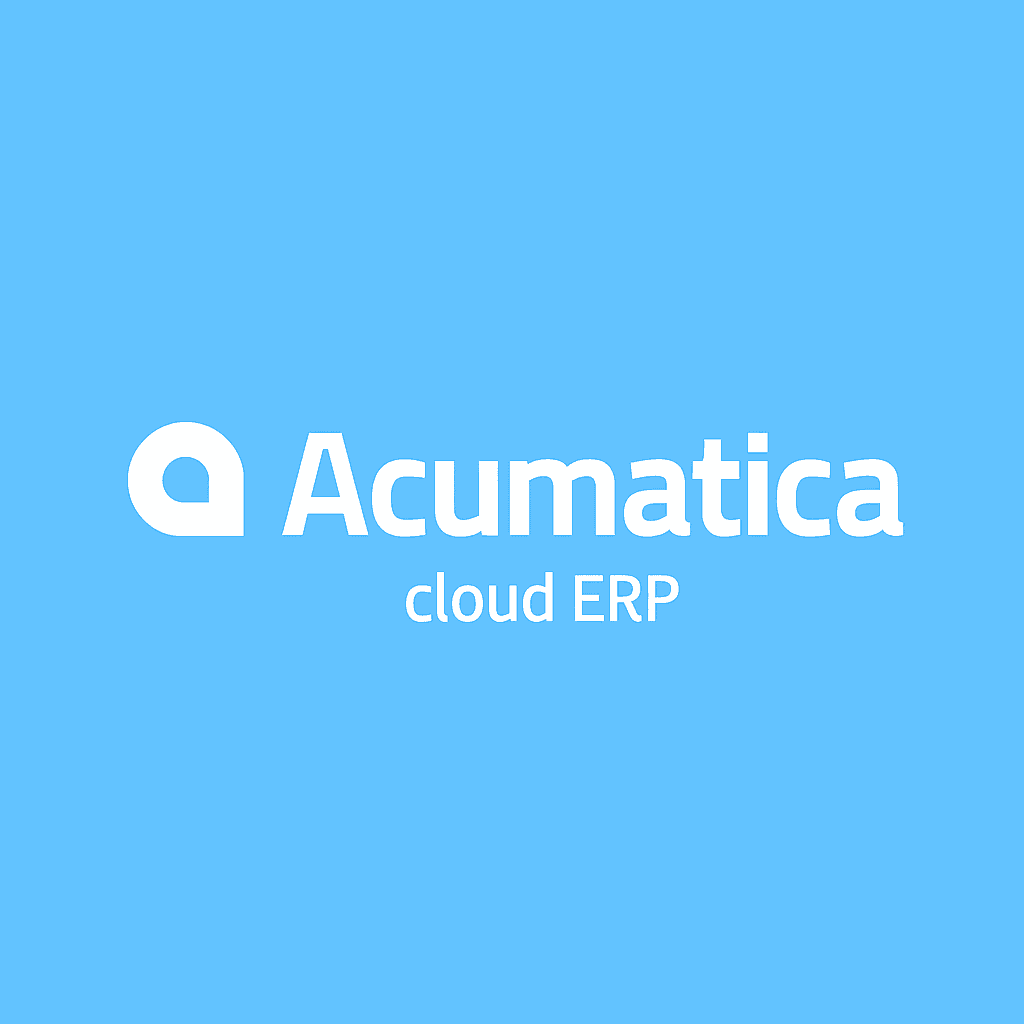Integrate Acumatica ERP with modern EDI to automate B2B workflows, reduce errors, and onboard partners faster with Orderful’s API-first platform.
Acumatica has become a go-to ERP for growing businesses because it combines cloud flexibility with tools that help teams manage finance, operations, and supply chain workflows all in one place. Upgrading to Acumatica also raises the critical question — how do we handle electronic data interchange (EDI) integration?
Many retail partners often require EDI for purchase orders, invoices, and shipment updates. Companies that move to Acumatica quickly discover that manual data entry or patchwork integrations can slow them down, create costly mistakes, and delay revenue recognition.
This guide explains how Acumatica EDI integration works, the benefits of automation, and why modern cloud API-first providers like Orderful give Acumatica the fastest path to seamless trading partner connectivity.
What Is Acumatica EDI Integration?
Acumatica EDI integration is the process of connecting Acumatica Cloud ERP with an EDI platform so business documents can move automatically between systems. Instead of entering purchase orders, invoices, or shipping updates by hand, the electronic documents flow directly between trading partners and Acumatica in a format both systems recognize.
Organizations that rely on Acumatica EDI software include manufacturers, distributors, third-party logistics providers, and retailers. For these businesses, seamless EDI integration reduces errors and helps maintain compliance with strict trading partner requirements.
How EDI Works with Acumatica ERP
EDI works as a bridge between trading partners and Acumatica. The process occurs in this order:
A retailer, logistics provider, or manufacturer sends an electronic document like a purchase order in an EDI format, such as ANSI X12 or EDIFACT.
The receiver's EDI platform, such as Orderful, receives the document, validates it, and generates a 997 functional acknowledgment back to the sender.
The EDI integration platform then translates the purchase order into a sales order that Acumatica can process right away.
From there, Acumatica manages the order through a REST API and completes the fulfillment process, generating an advance ship notice (ASN) when products are shipped, followed by an electronic invoice once the order is complete.
Each document Acumatica generates moves back through the connected EDI system and out to the partner in the required format.
Acumatica's REST API integration allows EDI platforms to communicate directly with the ERP, eliminating manual processes and ensuring data flows seamlessly in both directions.
Common EDI Documents for Acumatica Users
Acumatica system users typically work with a core set of EDI documents that keep orders, shipments, and payments moving smoothly between systems.
Purchase order (EDI 850): sent by a retailer or distributor to request goods
Purchase order acknowledgment (EDI 855): confirms the order details have been received and accepted
Advance ship notice (ASN) (EDI856): communicates shipment details, packaging, and expected delivery times
Invoice (EDI 810): completes the financial side of the transaction once fulfillment is finished
Warehouse documents (EDI 940/945): used when logistics providers are integrated with Acumatica to align warehouse shipping orders and confirmations
Benefits of Integrating EDI with Acumatica
Integrating EDI directly with Acumatica Cloud ERP transforms how businesses manage B2B relationships. Instead of chasing down email attachments or manually rekeying orders, companies can use B2B EDI integration to exchange documents instantly with business partners.
Some organizations have chosen to outsource EDI operations entirely. While EDI outsourcing can remove much of the technical overhead, it often creates new challenges such as hidden fees, slower onboarding, and limited visibility into day-to-day activity.
A modern EDI solution for Acumatica integration offers several distinct advantages, including:
Automated data exchange: Transactions flow directly between Acumatica and trading partners without manual rekeying. This reduces human errors and accelerates order processing.
Direct control within the ERP: Teams manage EDI operations inside Acumatica rather than relying on outside vendors. This gives business and IT leaders greater visibility and accountability.
Immediate access to data: Updated key information is always immediately available. Users can act quickly on orders, invoices, or shipping updates without waiting for batches to process.
Real-time visibility into supply chain operations: Companies can track documents and partner activity as they happen. This helps prevent delays and supports stronger trading partner relationships.
Pricing transparency: Modern platforms replace hidden transaction fees with clear, predictable costs. Finance teams can plan more confidently and avoid unpleasant surprises.
These benefits empower faster decision-making and lead to far fewer manual data entry errors.
Challenges with Legacy EDI for Acumatica
Many companies still try to connect it to older EDI systems that operate on outdated processes. Legacy providers often introduce bottlenecks that slow down supply chain transactions and frustrate teams. Common challenges include:
Slow onboarding: Legacy EDI providers often require weeks or months to bring on new trading partners. These delays can postpone revenue recognition and make it harder to meet customer deadlines.
Drawn-out testing cycles: Users are often at the mercy of the legacy EDI provider's timetable for testing and validating electronic document exchange.
Manual mapping and costly customizations: Traditional platforms rely on one-off data mappings that must be rebuilt for each partner. This adds unnecessary expense and makes every integration a complex project.
Hidden and unpredictable costs: Many providers still charge per-document fees, kilocharacter rates, or network access fees. These costs add up quickly and make it difficult to budget for EDI operations.
Limited real-time data sync with Acumatica: Legacy systems rarely integrate directly with Acumatica’s API. Without seamless communication, teams face delays, manual effort, and costly mistakes.
These limitations create friction across business processes and keep organizations from realizing the full value of their Acumatica ERP system.
How Modern Cloud EDI Simplifies Acumatica Integration
Acumatica users expect speed and flexibility. With a cloud-based, API-first platform, companies can simplify operations and avoid the risks of outdated approaches. Key advantages of EDI modernization include:
API-first approach: Cloud EDI connects directly to Acumatica’s REST API, enabling seamless communication and eliminating tedious manual tasks.
Pre-built mappings: Providers maintain ready-made connections to major trading partners. These mappings cut setup time and make onboarding new partners easier.
Cost transparency: Flat, predictable pricing replaces hidden per-document charges. This gives companies better control over their budgets.
Scalability and flexibility: Cloud systems grow with the business, allowing new partners or document types without expensive custom development.
Built-in monitoring and error handling: Real-time alerts and dashboards help teams catch and address issues early.
These improvements mean faster onboarding, lower costs, and more reliable supply chain performance.
Why Choose Orderful for Acumatica EDI Integration
Orderful was built to help companies get more from their Acumatica ERP investment. Instead of long projects or fragmented tools, the platform delivers a faster Acumatica EDI solution. Highlights include:
Native alignment with Acumatica workflows: Orderful supports Acumatica’s order-to-cash and procure-to-pay processes, ensuring data flows match how the ERP is actually used.
Extensive trading partner network: With pre-configured connections to major retailers, distributors, and logistics providers, Orderful accelerates onboarding and reduces the back-and-forth with partners.
Rapid time-to-value: Companies typically bring new partners live in under nine days. Faster onboarding means earlier revenue recognition and fewer stalled projects.
Flat, per-partner pricing: Orderful eliminates per-document charges and other hidden fees, giving finance teams predictable EDI costs.
Unified visibility for business and IT teams: Real-time dashboards make it easy for technical staff to monitor performance while business users track order status and partner compliance.
If you do business with partners that utilize a completely different ERP system but may be in the market for an EDI system update, Orderful also integrates easily with several other popular ERP platforms, such as ERPNext and NetSuite. By combining these capabilities, Orderful gives your ERP an EDI solution that’s fast, predictable, and built for growth.
Feature | Legacy EDI for Acumatica | Modern EDI (Orderful) |
|---|---|---|
Integration Type | Manual data entry, file transfers | API-first, cloud-based automation |
Setup Time | Weeks or months | Under 9 days |
Pricing | Hidden per-document fees | Flat per-partner pricing |
Visibility | Limited dashboards | Real-time monitoring and alerts |
Mapping | Custom one-off setups | Prebuilt mappings and validations |
Testing | Manual certification | Real-time validation and automation |
Scalability | Complex and costly | Instant partner expansion |
How to Get Started with Acumatica EDI Integration
For Acumatica users, setting up EDI doesn’t have to be complicated. Following a structured process helps ensure a smooth implementation and faster results:
Define trading partner and document requirements: Identify which partners you need to connect with first and which documents are essential.
Select a modern provider: Avoid legacy VANs and choose an EDI solution that integrates natively with Acumatica’s REST API.
Map key documents: Work with your provider to map core transactions directly into Acumatica workflows.
Test and validate transactions: Confirm documents are translating correctly and data flows without errors.
Scale with additional partners: Once the foundation is working, add new trading partners as needed.
By following these steps, businesses can achieve a successful integration that reduces manual effort and keeps supply chain operations running smoothly.
Drive Efficiency With Acumatica EDI Integration
Acumatica is a powerful ERP on its own, but connecting it to an EDI platform unlocks the full potential of automated B2B workflows. Modern cloud solutions like Orderful change the equation by giving Acumatica users faster integrations, predictable pricing, and a direct line to partner compliance.
If your business is ready to simplify its EDI processes and accelerate results with Acumatica ERP, now’s the time to act. Contact an EDI expert or book a demo today, and discover how Orderful can help you achieve supply chain excellence.
FAQs About Acumatica EDI Integration
Does Acumatica support EDI?
Yes. Acumatica supports EDI through integration with modern, cloud-based EDI platforms like Orderful. These solutions automate data exchange between Acumatica ERP and trading partners, helping businesses process purchase orders, invoices, and shipping notices without manual input.
What’s the fastest way to integrate EDI with Acumatica?
The fastest way to integrate EDI with Acumatica is by using a modern API-first EDI platform such as Orderful. Its prebuilt mappings and real-time validation tools allow companies to complete integrations in less than nine days, compared to weeks or months with traditional systems.
Which EDI documents are most important for Acumatica?
The most common EDI documents used with Acumatica include purchase orders (EDI 850), acknowledgments (EDI 855), advance ship notices (EDI 856), invoices (EDI 810), and warehouse documents (EDI 940/945). Together, these documents automate the order-to-cash and procure-to-pay cycles.
How long does Acumatica EDI onboarding take with Orderful?
Most Orderful customers complete EDI onboarding for Acumatica in under nine days. Prebuilt retailer mappings, automated validation, and self-service testing features streamline the process and allow teams to go live faster.
What makes Orderful different from legacy Acumatica EDI providers?
Orderful’s API-first approach replaces manual mapping with automation and real-time validation. Unlike legacy VANs that charge per document, Orderful offers flat, per-partner pricing and unified visibility across trading partner activity helping businesses scale faster and with greater control.
- 01What Is Acumatica EDI Integration?
- 02How EDI Works with Acumatica ERP
- 03Common EDI Documents for Acumatica Users
- 04Benefits of Integrating EDI with Acumatica
- 05Challenges with Legacy EDI for Acumatica
- 06How Modern Cloud EDI Simplifies Acumatica Integration
- 07Why Choose Orderful for Acumatica EDI Integration
- 08How to Get Started with Acumatica EDI Integration
- 09Drive Efficiency With Acumatica EDI Integration
- 10FAQs About Acumatica EDI Integration

